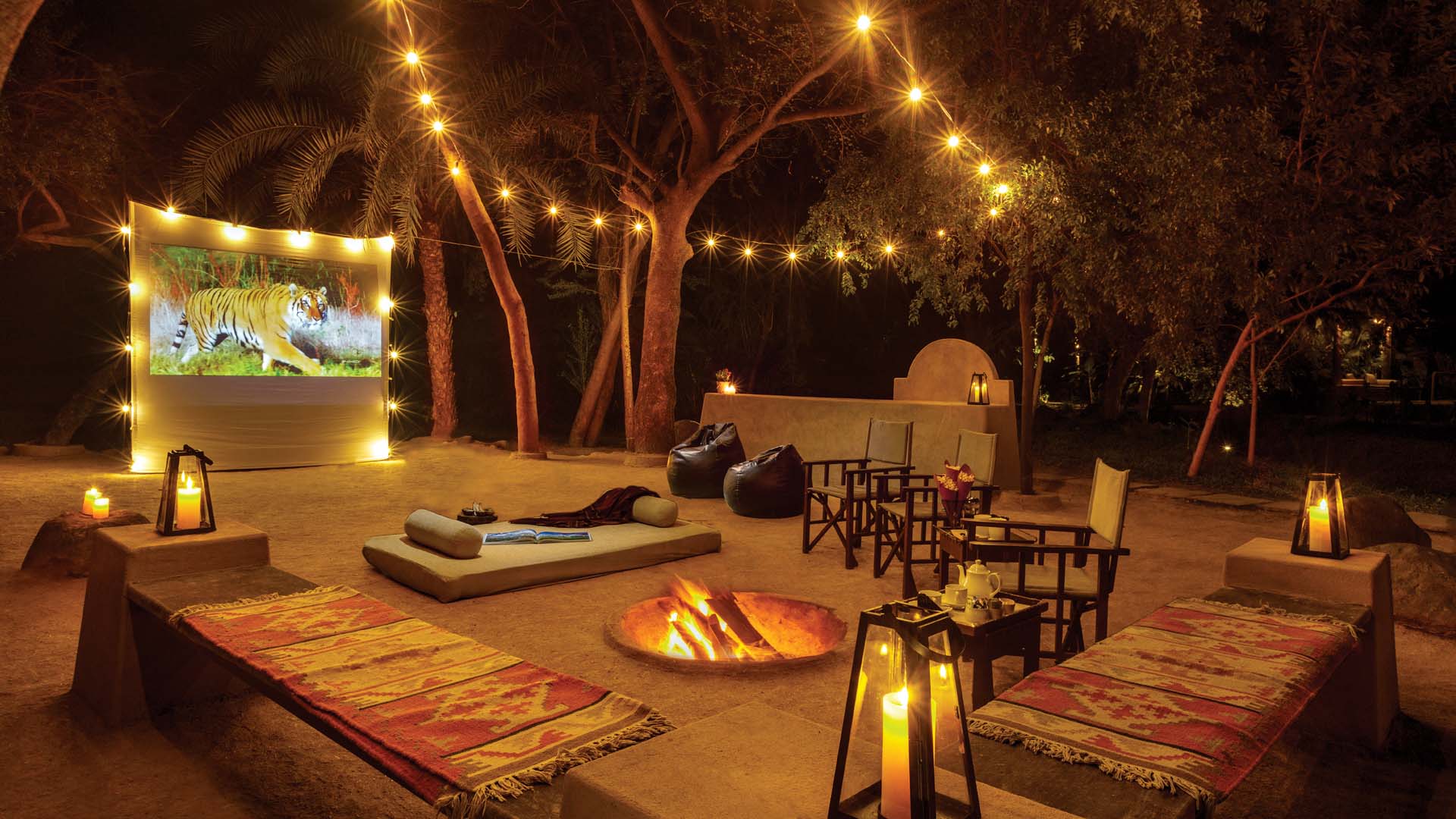Why Bite-Sized Vacation is the New Big Idea
Long holidays are out; microcations are in. For India’s urban, time-starved generation, short, soul-charging getaways are fast becoming the norm. High on experience, low on logistics—this is travel redefined for the burnout era.
By Neeta Lal
Think vacation—but trimmed like a designer blazer. Welcome to the microcation: bite-sized vacations tailormade to today’s fast-paced lives. The short getaway, typically lasting two to four days, trades length for intensity, rest for rush. And it’s not just a long weekend—it’s a re-engineered travel format for the burnout-prone, time-strapped, dopamine-hungry Indian urbanite.
Indeed, the travel industry’s most catalytic shift is happening on weekends. Coined circa the pandemic, the term 'microcation' exploded in popularity after lockdowns, becoming the new go-to for Millennials (aged 29-44) and Gen Z (in their 20s) looking to swap email pings for Himalayan winds—no HR approvals required. Propelled further by the remote work culture, these quick getaways—sometimes within the city or just a few hours away—fit snugly into weekends or long weekends, offering travellers the best of both worlds: a change of scenery and the ability to keep working, if needed.
As Devendra Parulekar, founder of SaffronStays, explains: “The concept of microcations—or as we call it, ‘holiday snacking’—has transformed how we market private villa rentals. Gone are the days when Indian families took long domestic summer vacations. Today, extended breaks are mostly for international travel, leaving 52 weekends and 13 public holidays a year—each a chance for a short, rejuvenating escape.”
Imagine telling your boss you’re off on a vacation—but it’s just for two or three days. Also, no jet lag, no laundry mountain, just a quick escape to refresh your soul and break the monotony. As Akshay Thusoo, Senior Vice President, Commercial, Sarovar Hotels, puts it: “Microcations aren’t a detour—they’re a new travel lane. It’s how India’s new earners and dreamers want to travel: short, soulful, and story-rich.”
Microcations have redefined how people plan and experience time away. With busy schedules, travellers aren’t always seeking long retreats—they want meaningful pauses, even for a weekend. Varun Nagpal, founder of Vianaar, explains, “This has reshaped not just travel but how the industry communicates. Marketing, once focused on property design or marquee amenities, is now far more experiential. Instead of showcasing architecture alone, brands highlight the little moments these stays enable: an unhurried breakfast under a tree, a glass of wine by the pool at dusk, a quiet morning of reading on the balcony. Through short-form storytelling, even the briefest stay can feel restorative. That immediate joy—squeezing soul and substance into a short span—is what people value most.”
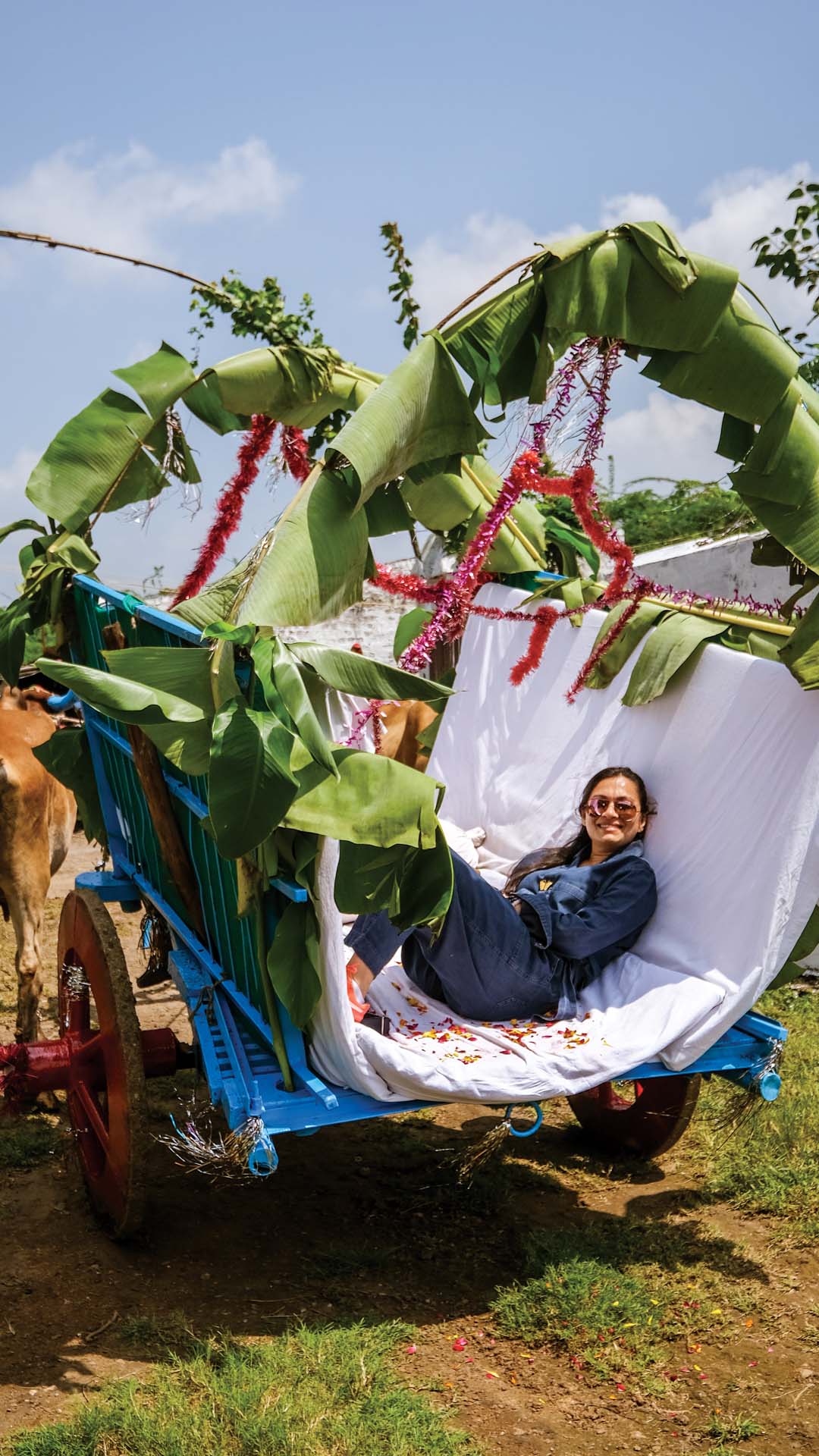
A bullock ride at the farm at The Ahilya Fort Heritage Hotel, Maheshwar.
Privacy is paramount
Families and friends increasingly choose private villas over hotels, drawn to private pools, lawns, and home-style meals. Parulekar notes, “There is also a growing pull towards wellness features such as yoga decks, nature walks, and tranquil surroundings that make even a two-day trip feel restorative.”
For homeowners, especially during short stays, dealing with trivialities is the last thing they want. They don’t want to worry about a gardener not showing up, the pool not being clean, or an appliance failing. Nagpal explains, “Our estate management ensures everything is taken care of—from gardens and pools to housekeeping and preventive maintenance. When an owner steps into their villa, we want them to simply relax. For microcations, that readiness is invaluable—they can arrive late on a Friday and immediately feel at home without thinking about a single detail. That’s become central to how we position our homes today.”
Yet microcations come with high expectations. Homeowners and guests want everything seamless from the moment they arrive, placing immense pressure on estate management. “The solution has been years in the making,” adds Nagpal. “It required investing in top-quality infrastructure, on-ground maintenance teams, and estate management systems to keep every home guest-ready at all times. Our model is about consistency across hundreds of unique villas—and that’s where our experience really counts.”
Sustainability is another key consideration. Quick getaways can increase travel footprints, so operators embed eco-friendly practices in the homes—from passive cooling and rainwater harvesting to solar power and waste management. “It’s our way of ensuring these homes aren’t just built for today’s traveller, but for generations to come,” says Nagpal.
Guests today aren’t just looking for a place to stay—they want a seamless, well-curated experience. With tighter schedules and a desire for meaningful breaks, microcations have naturally become the preferred way to recharge over weekends or short holidays. “Our marketing strategy reflects this shift,” says Nagpal. “We focus on removing the usual hassles of short getaways, offering thoughtfully designed amenities and services that elevate the experience without overwhelming the guest. From early check-ins and late check-outs to curated breakfasts and local concierge support, a two- or three-day stay can be a true indulgence in convenience and comfort.”
The audience is discerning and mindful of value—they expect transparency and won’t overspend for the sake of luxury. “It’s about striking the right balance between comfort, service, and authenticity,” adds Nagpal, “so a microcation feels special yet sensible.”
This careful balance of operational excellence, sustainability, and thoughtful guest experience allows microcations to deliver maximum impact in minimal time. For homeowners and travellers alike, these short breaks are no longer just an escape—they are moments of genuine rejuvenation, designed to leave a lasting impression without demanding long leaves or exhaustive planning.
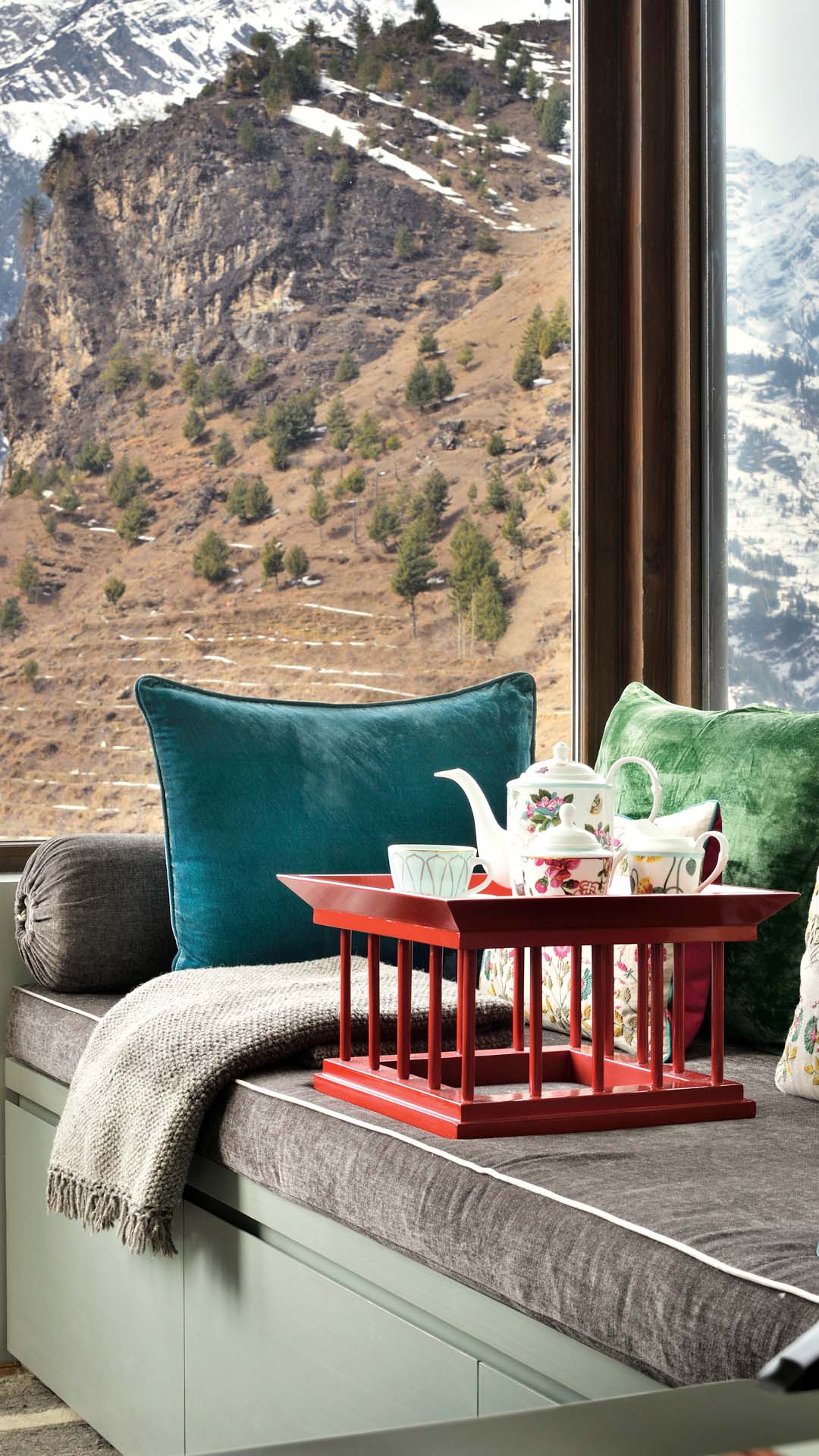
Sitara Himalaya offers a space to pause and connect with nature;.
Microcations aren’t a detour—they’re a new travel lane. It’s how India’s new earners and dreamers want to travel: short, soulful, and story-rich.
Akshay Thusoo
Senior Vice President, Commercial, Sarovar Hotels

Cultural immersion
According to Nagpal, microcations are a response to how people want to travel in today’s fast-paced world. “Modern travellers are seeking high-impact experiences that don’t demand extensive planning or long leaves. As lives get busier, the need for more frequent, shorter, and meaningful escapes will only intensify. This format will become a core travel behaviour, especially in culturally rich markets like India,” he adds.
In Amritsar, Sarovar Hotels’ guests can savour Amritsari kulchas and explore bazaars on curated walking trails; Goa’s Cloud 9 offers beach breakfasts, fishing community visits, and candlelit, music-fuelled dinners under the stars.
From Le Méridien New Delhi’s tongue-in-cheek ‘The Great Delhi Do Nothing’ package to Udaipur-based Sangam Farms’ curated ‘maximum reset’ stays, the industry is reshaping short breaks as transformative micro-experiences. “Every second, every minute is essentially planned in a manner to maximise the holiday experience without compromising on rejuvenation and relaxation, which are fundamental to a traveller. Every minute counts,” opines Arihant Jain, COO, Sangam Farms, Udaipur, which offers curated, high-end holidays. “You shouldn’t need a vacation after your vacation.” According to Jain, micro-trips are a relevant and new-age way of travel to fully optimise one's time at a premise. “At Sangam Farms, we offer 'maximum refresh, high impact holidays', a rare blend of rustic ambience with indulgent comforts and upscale elegance in harmony with Mother Earth. It’s a holistic experience in a time-sensitive manner."
Vacationers can dig into delicious farm-to-table cuisine—flavour-charged dishes crafted from the freshest ingredients—whilst relaxing in luxurious tents amidst lush surroundings. A dairy farm tour, strawberry plucking, a quintessentially Rajputana experience of one’s choice, a stallion ride, wellness at Amaya spa, as well as a mini tractor and barn camping experience offer bespoke cultural immersion.
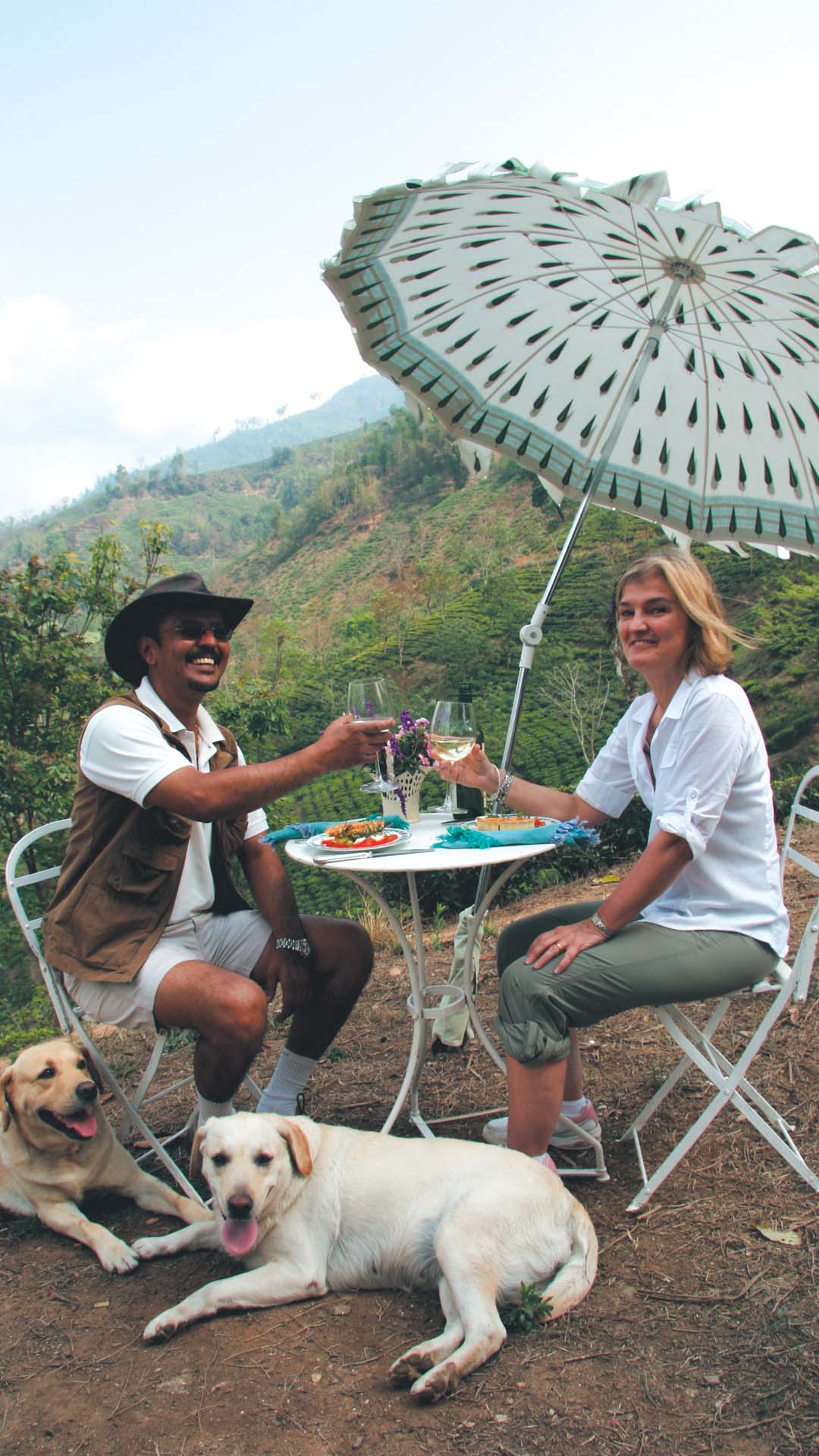
A meal with the estate manager at Glenburn Tea Estate, Darjeeling.
Optimising relaxation and rejuvenation is key to any microcation experience: No rushed itineraries, no packing stress—just immersive, soulful stays that feel like a genuine holiday, not a ticking clock.
Arihant Jain
COO, Sangam Farms

Do nothing—or everything!
Meena Bhatia, Vice President and General Manager, Le Méridien New Delhi, puts it wittily: “We created ‘The Great Delhi Do Nothing’—a microcation for the overachieving underachiever. No agendas, no emails, just pasta-making, coffee art, sushi crafting, spa and a cocktail or two. It’s about stillness over schedules.”
This playful approach captures the paradox of today’s traveller: craving both connection and disconnection, novelty and comfort. Millennials and Gen Z aren’t waiting for the perfect moment or a long holiday; they’re stealing micro-moments for maximum joy.
Quick getaway
When the trip’s duration is short, optimisation is key. Santosh Kumar, Country Manager - India, Sri Lanka, Maldives and Indonesia at Booking.com, observes: “Indian travel is evolving rapidly, especially among younger generations. Booking.com's 2025 Travel Trends data reveals that 59% of Gen Z and 55% of Millennials in India are prioritising short domestic trips (1-4 days) this year, with 38% of Gen Z and 37% of Millennials also planning quick international getaways. Gen Z is drawn to beach trips, nature excursions and cultural events, while Millennials favour nature trips, beach vacations, and visits to loved ones.”
Kumar elaborates that with 2025 offering several long weekends, Indians are maximising these opportunities with quick getaways. For instance, a Good Friday long weekend saw a surge in accommodation searches for destinations within easy reach of major metros, such as Mahabaleshwar and Lonavala near Mumbai and Pune, and Ooty, Munnar, and Kodaikanal near Bengaluru and Chennai, as well as Rishikesh and Mussoorie from Delhi NCR.
Guests prefer drivable destinations within two to four hours from metros, enabling spontaneous weekend plans. “From Lonavala and Alibaug near Mumbai and Pune, to Jaipur, Himachal, and Uttarakhand for Delhi NCR, proximity drives demand,” says Parulekar.
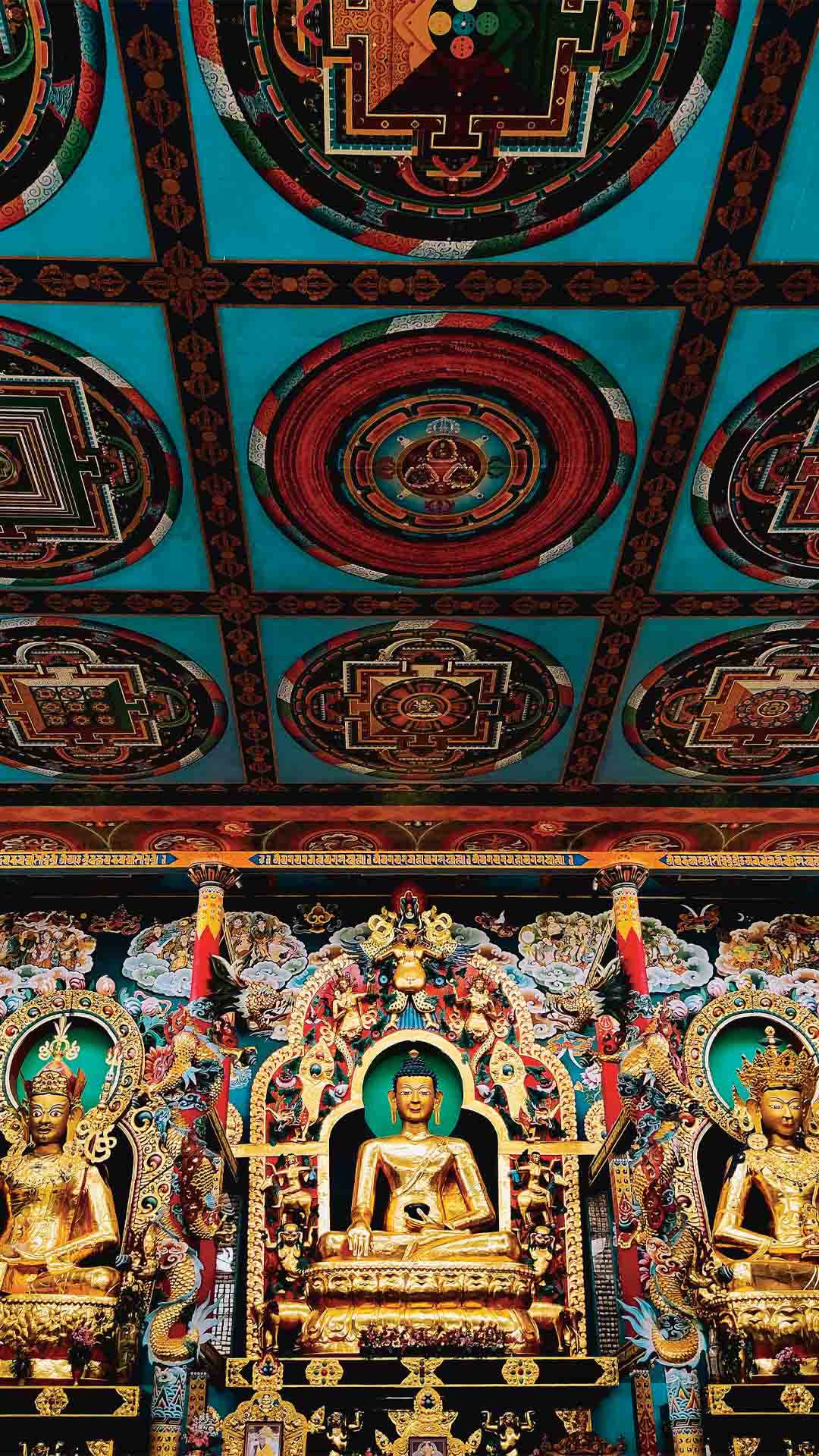
Evolve Back, Coorg, offers culturally immersive trips such as a visit
to the Tibetan settlement at Bylakuppe and its Namdroling Monastery.
Our short-stay experiences are designed to help guests pause without pressing pause on life.
Saumitra Chaturvedi
General Manager, Novotel New Delhi City Centre

Living in the moment
Millennials and Gen Z, who make up roughly 34% of India’s 1.4 billion population, are the trend’s biggest fans, say industry experts. These segments prioritise experiences over possessions, crave flexibility, and prefer genuine, local adventures over cookie-cutter luxury. They go for nature, culture, beaches, and meaningful experiences.
Microcations are also about living in the moment—eating street food, exploring hidden gems, and making memories that outlast any five-star hotel stay, shares 30-year-old Prateek Lahiri, a Delhi-based computer analyst recently back from a sojourn to Hampi in Karnataka with friends. ”We stayed at an Airbnb, ate at dhabas and mingled with locals to experience the region in all its authenticity.”
According to Saumitra Chaturvedi, General Manager, Novotel New Delhi City Centre, today’s fast-paced lives leave little room for planning elaborate getaways, so people are increasingly looking for ways to pause, recharge, and reconnect quickly and meaningfully.
“Today’s traveller isn’t just looking for a place to sleep—they’re seeking balance, peace, and experiences that stay with them long after they’ve checked out. With hybrid work and evolving lifestyles, short breaks in familiar yet elevated surroundings offer both ease and escape. Our short-stay experiences are designed to help guests pause without pressing pause on life,” adds the hotelier.
The hotel’s central location in Jhandewala is another plus, offering seamless access to Delhi’s rich cultural and heritage landmarks, bridging the soulful charm of Old Delhi with the contemporary rhythm of New Delhi. Guests can explore the city’s vibrant streets, monuments, and stories by day, and return to a peaceful, wellness-focused sanctuary by evening.
To deepen these experiences, the property is collaborating with vendors who specialise in authentic heritage and culinary journeys—from hidden food trails to monument-led storytelling walks. These curated extensions enable guests to add a layer of discovery and local connection to their short urban escapes. “Our microcations allow guests to rediscover their city through a new lens, indulging in luxuries, savouring curated wellness and bespoke dining experiences,” elaborates Chaturvedi.
SaffronStays offers villas designed to meet a clear need. “Our strategy positions villas as the perfect ‘snacking product’ for quick getaways—whether with immediate family, extended family, or friends for reunions and milestone celebrations. By highlighting proximity to major metros and ease of planning, we’ve tapped into the impulse-driven, short-lead bookings that define today’s travel patterns,” says Parulekar.
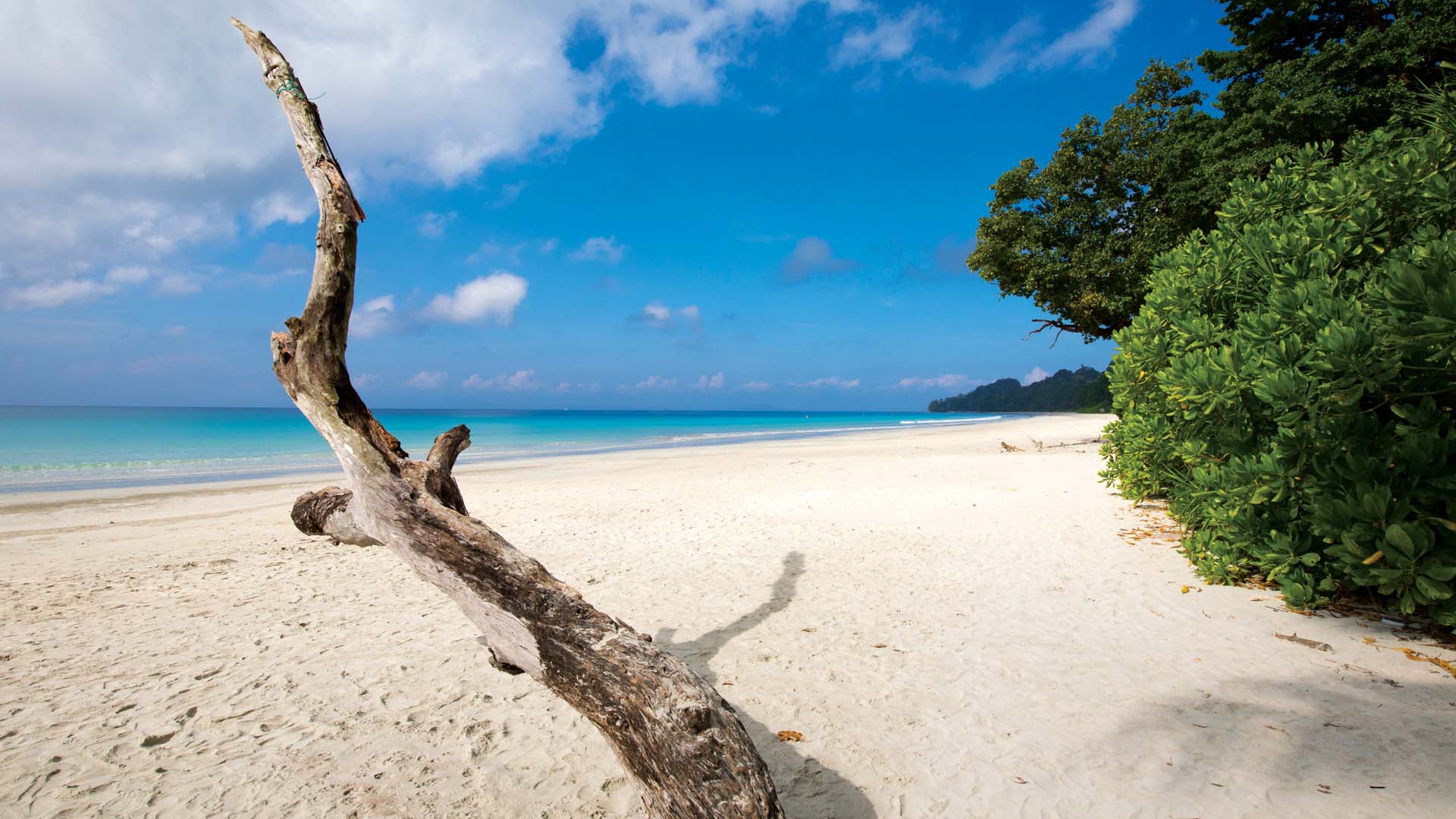
Taj Exotica Resort & Spa, Andamans, is surrounded by a rainforest and affords scenic views of the Indian Ocean.
Travel is less about checking destinations and more about finding small, meaningful moments to pause and reset.
Meena Bhatia
Vice President & General Manager, Le Méridien New Delhi

Why less is more
As flexibility, wellness, and instant gratification reshape travel expectations, hotels and resorts are learning that when done right, less really is more—and more profitable. Pratima Badhwar, Accor’s Head of Commercial - India & South Asia, notes: “We’ve observed a significant rise in drivable, quick getaways post-pandemic. Travellers seek seamless check-ins, convenient locations, and experiences that maximise their limited time. Our properties in Jaipur, Udaipur, Goa, and Mysore offer a perfect blend of comfort and cultural immersion that aligns with this new travel behaviour.”
At first glance, a mini-vacation might sound like less revenue for the travel and hospitality industries. Shorter stays, fewer meals, less spending on extras—how could this be good for business? Surprisingly, microcations are turning out to be a goldmine.
The shift from ‘big vacation once a year’ to ‘frequent little breaks’ means more bookings spread throughout the year, not just during peak seasons. Besides generating year-round demand, these breaks are yielding surprising margins. Hotels that once worried about mid-week vacancies now find pockets of high occupancy from city dwellers looking to ‘get away’ without going too far.
And it’s not just budget travellers. Data from MakeMyTrip reveals that about 20% of microcation bookings are for hotels priced ₹7,000 and above per night, and 10% are at ₹10,000+ per night—signalling that guests are willing to pay a premium for quality, convenience, and curated experiences. This fuels a profitable niche in luxury, boutique, and experiential hospitality.
Moreover, multiple shorter trips keep cash flows steady and broaden market reach, especially among younger, experience-seeking demographics. It’s a win-win for businesses that adapt to this trend, offering bespoke packages, quick check-ins, and local flavour.
Goa exemplifies this shift. Bookings surged 105% year-on-year, showing how the destination has evolved from a long-weekend getaway to a frequent choice for quick breaks. “This reflects a broader trend: instead of one long holiday, people now ‘snack’ on multiple shorter breaks, seamlessly fitting them into busy lifestyles,” says Parulekar.
Trips with purpose: Beyond the quick escape
Industry experts say microcations aren’t just mini-breaks—they’re meaningful journeys. Ergo, during their sojourns, young travellers aren’t collecting passport stamps; they’re curating story-worthy, social-friendly, soul-filling experiences. And they’re doing it on their terms.
Their experiences may range widely: from adrenaline-fuelled adventure retreats (think trekking, paragliding) to serene wellness retreats with yoga and spa sessions. Festival retreats allow travellers opportunities to soak in local culture—Holi in Vrindavan or kite festivals in Ahmedabad, anyone? Then there are off-the-grid escapes for those craving a digital detox and deep nature immersion.
There’s also the demand for quick international escapes to nearby visa-friendly hotspots—Dubai, Singapore, Bangkok, and Phuket—all ideal for a long weekend’s dose of luxury and culture.
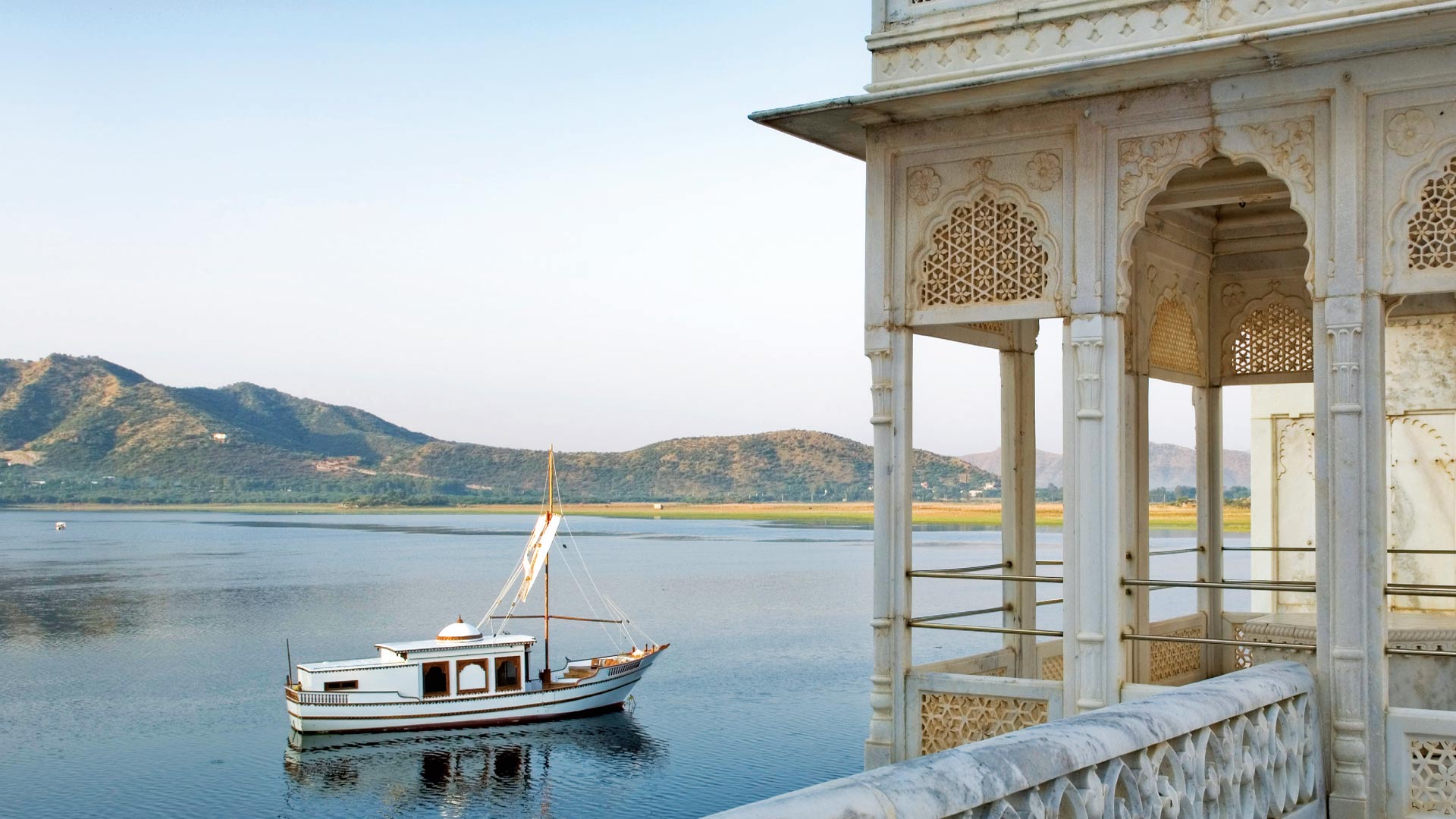
Rajasthan is one of India’s leading destinations for a quick getaway. A boat ride on Udaipur’s Lake Pichola is one of its many attractions.
Our estate management ensures everything is taken care of. When an owner steps into their villa, we want them to simply relax. For microcations, that readiness is invaluable—they can arrive late and immediately feel at home.
Varun Nagpal
Founder, Vianaar

Quick doesn’t mean cheap: Who’s spending, and where?
Industry veterans say microcations appeal because they fit snugly around careers, relationships, and social calendars without exhausting planning. These escapes recharge without derailing professional schedules. The rise of remote work and hybrid schedules has only turbocharged this trend.
Mumbai-based Wamika Arora, 25, a corporate professional who is just back from a microcation, says the refreshing break helped her unwind and recharge. “I visited a popular vineyard in Maharashtra with my family, and it turned out to be one of the most enjoyable vacations. From the moment we arrived, the scenic beauty and serene atmosphere of the vineyard set the tone for a relaxing retreat.”
Doing a vineyard tour, learning about the winemaking process and strolling through the picturesque rows of grapevines was therapeutic. “We also did a wine tasting session, where we sampled a variety of signature wines—each with its unique flavour and character. The days were filled with light outdoor activities—cycling through the vineyard trails, playing badminton, and soaking in the peaceful countryside vibe,” adds Arora.
Microcations and wellness: The soul-filling factor
In a world rife with burnout and screen fatigue, microcations are an antidote, say practitioners. The wellness industry aligns perfectly with this trend—from yoga and meditation retreats to spa and nature therapies. These short trips provide vital “lively recharges” to return to daily life with renewed energy and clarity.
Sangam Farms’ Jain stresses that optimising relaxation and rejuvenation is key to any microcation experience: “No rushed itineraries, no packing stress—just immersive, soulful stays that feel like a genuine holiday, not a ticking clock.”
Le Méridien’s ‘The Great Delhi Do Nothing’ epitomises this shift: “Travel is less about checking destinations and more about finding small, meaningful moments to pause and reset,” elaborates Bhatia.
The business of microcations: Data speaks
MakeMyTrip data shows a 25% increase in people taking more than three trips a year in 2023 compared to 2019—most are micro-trips or weekend getaways. Most bookings are for couples (51%) or groups/families (20%), highlighting the social dimension of microcations. Urban metro centres—Mumbai, Delhi, Bengaluru—lead the pack in microcation demand.
India Brand Equity Foundation forecasts India’s travel and tourism industry reaching $23.72 billion this year with nearly 10% annual growth, underpinned by evolving travel patterns like microcations.
How businesses are adapting
Microcations are reshaping the entire travel ecosystem—from airlines and hotels to tour operators and local experiences. Le Méridien, Accor, Sarovar Hotels, Sangam Farms, and Novotel have all tweaked offerings to cater to this demand for shorter, experience-driven stays. Personalised packages, flexible check-in/out, curated local experiences, and even no-agenda staycations are the new normal.
“Direct air connectivity and easy access have played a pivotal role in putting domestic/ short-haul micro-trips firmly on the radar, with affordability—both land and air—serving to sustain the momentum,” says Rajeev Kale, president and country head (holidays), MICE, Visa-Thomas Cook (India).
Booking.com’s Kumar anticipates 2025 will see micro-cations becoming mainstream travel behaviour, with younger generations leading the charge and redefining what a vacation means. Sangam Farms’ Jain sums it up succinctly: “Microcations represent the future of travel—a balance of authenticity, relaxation, and time efficiency.”
So, where are you heading for your microcation?
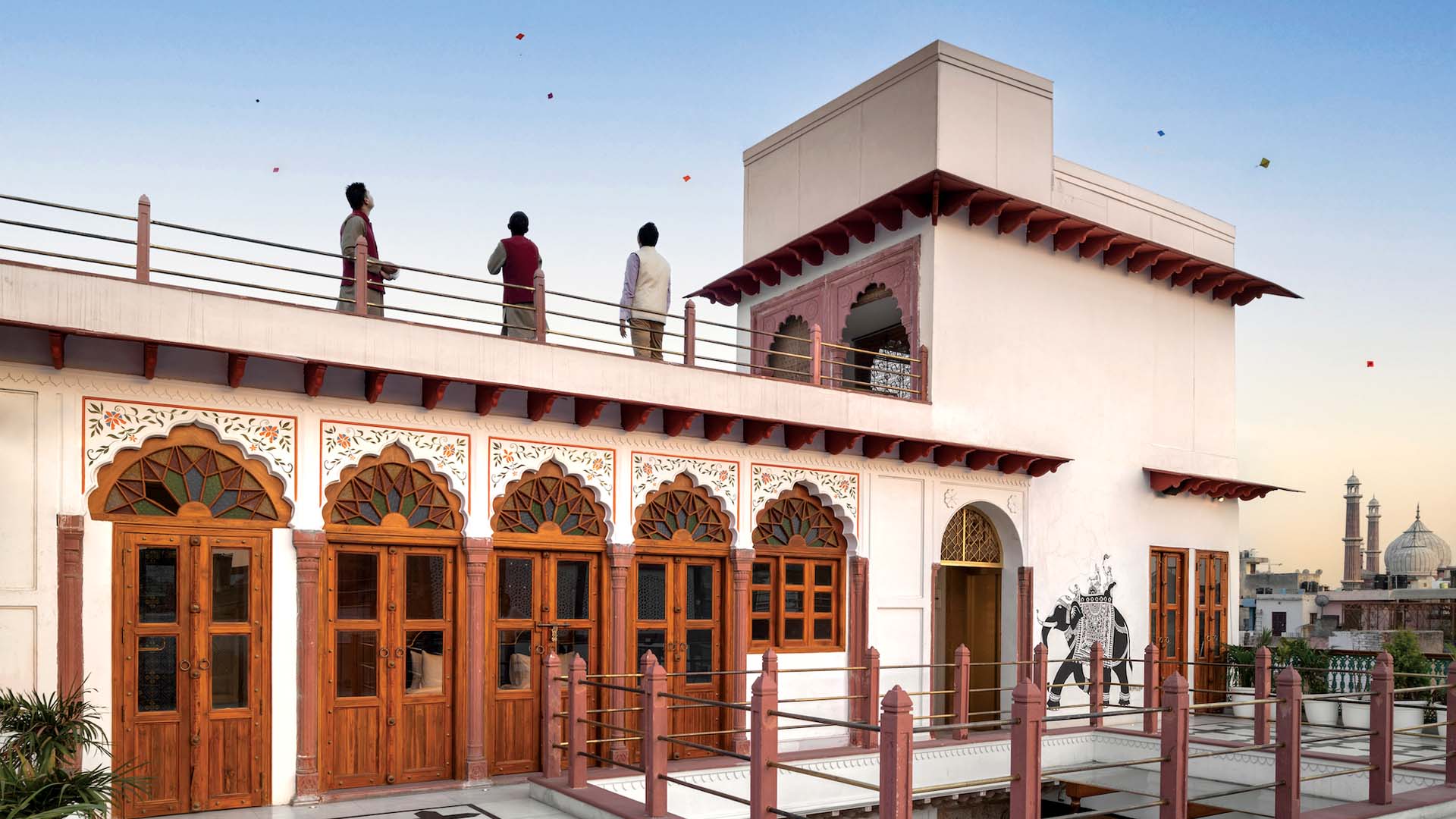
Microcations—or ‘holiday snacking’—has transformed how we market private villa rentals. Gone are the days when Indian families took long domestic summer vacations. Today, extended breaks are mostly for international travel, leaving weekends and public holidays for short escapes.
Devendra Parulekar
Founder, SaffronStays



























